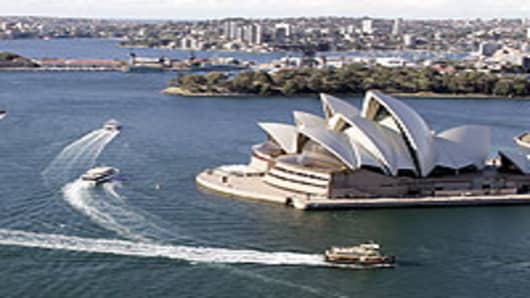They say a marked slowdown in the second-half of the year could be expected on softening jobs demand, a cut back in household spending as well as lower investments in the mining sector.
Shane Oliver, Chief Economist at AMP Capital, says the economy was artificially boosted in the first-half of 2012 by the “peak strength” in mining investment and fiscal stimulus including government cash hand-outs to compensate for the carbon tax.
“We are going to see slower growth, as we go through the second half, government payments will run their course, mining will lose some investment, the housing sector will remain subdued – I see a return to sub-trend growth at 2-2.5 percent,” Oliver said.
On a quarter-on-quarter basis, he forecasts growth will average just 0.5 percent in the third and fourth quarter, from around 1 percent in the first and second quarters.
Oliver adds that the economy is likely to miss Reserve Bank of Australia’s (RBA) 2012 growth target of 3.5 percent.
Gerard Minack, Chief Economist at Morgan Stanley, says the slowdown in consumer spending driven by softness in the labor market, will be the biggest drag on the economy. Overall, household spending accounts for 55 percent of GDP.
This weakness is already been reflected in recent economic indicators. Job advertisements in newspapers and on the internet, for example, fell 2.3 percent in August, a survey showed on Monday. While, retail sales fell 0.8 percent in July against expectations for a 0.2 percent rise - as consumers cut back spending, particularly in the country’s department stores.
The unemployment rate, which stands at 5.2 percent is forecast to rise to 5.5 percent by the end of the year, according to JPMorgan Australia.
Commodities to Drag
Paul Bloxham, Chief Economist at HSBC, adds that weakness in commodity prices, including key exports such as iron ore – which accounts for 20 percent of overall exports - will weigh on growth.
“Commodity prices have come off their peaks so there is less income flowing into the economy...this will be reflected in the fact that the mining investment story will contribute less in the second half,” he said.
In recent months, miners have been scaling back on their investment plans in the face of falling demand for resources, with Fortescue Metals the latest to announce that it is deferring developments on some key projects. This darkened the trade outlook even as Australia reported Tuesday that export volumes grew 3 percent in the second quarter.
According to Adam Boyton, Chief Australia Economist at Deutsche Bank, a failure in the recovery of commodity prices could push the Australian economy into a recession as early as next year.
Given the recent declines in spot iron ore and coking coal prices, Boyton estimates the terms of trade - which measures the ratio of export prices to import prices - could fall 15 percent by the fourth quarter.
RBA Has Enough Ammunition
While Oliver of AMP Capital agrees that the economy is at risk of hitting a recession in the face of persistent weakness in resource prices, he says the country’s central bank has sufficient policies responses to prop up growth in the rest of the economy.
“The RBA has room to cut rates and lower the Aussie dollar to buffer the economy,” Oliver said.
The central bank on Tuesday left benchmark interest rates on hold at 3.5 percent, noting that current policy settings remain “appropriate.” However, economists maintain that a further rate cut remains on the cards in the fourth quarter, given the slowdown in key trade partner China.



